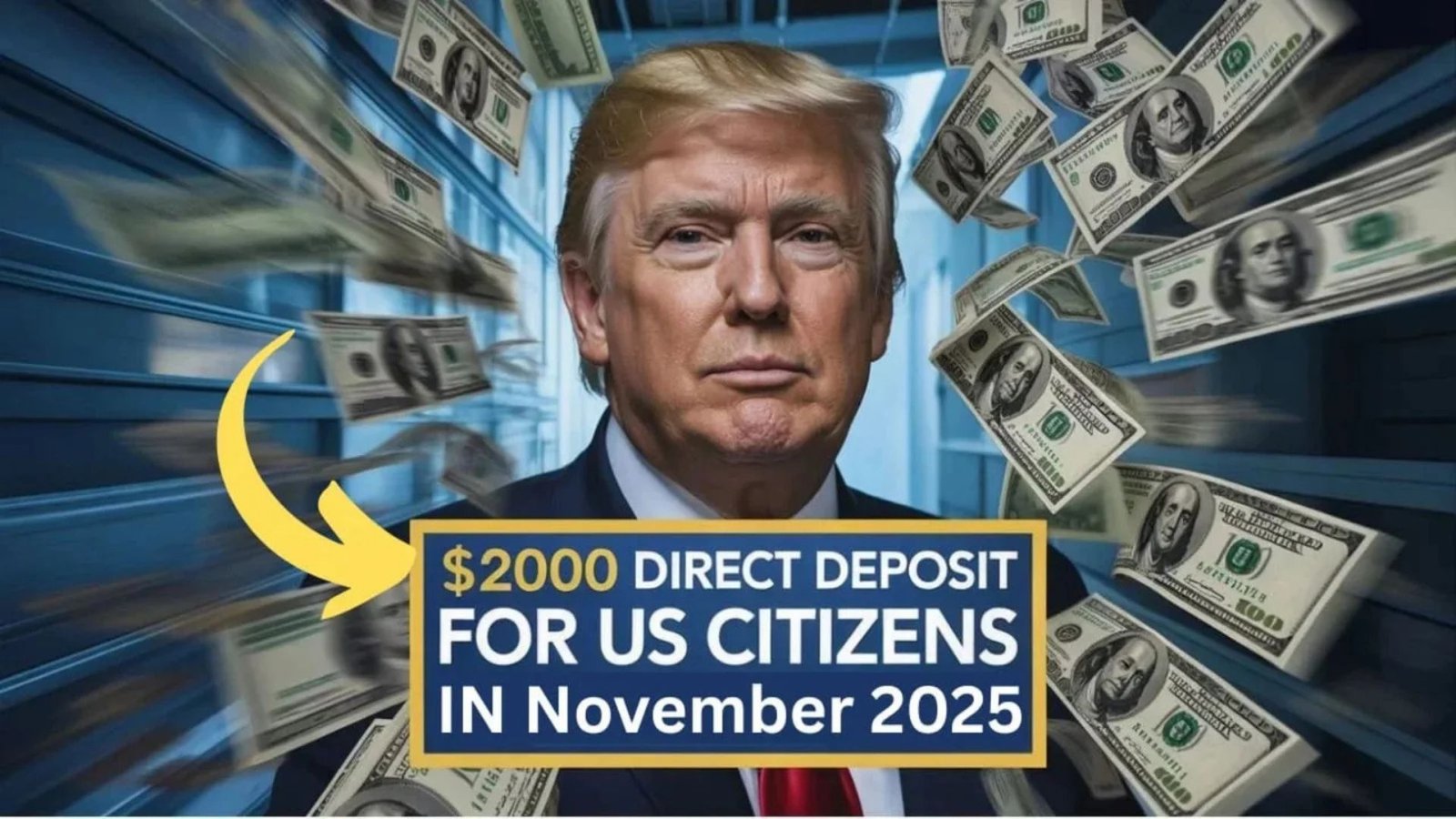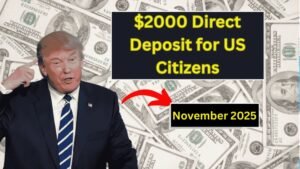You’ve likely seen the chatter online about a $2,000 direct deposit hitting American bank accounts in November 2025. Could this be free money? Or is it just another rumor? In this guide, we’ll unravel everything you need to know—eligibility, timing, what’s true and what’s not—so you can decide whether you might qualify.
What It Is – The $2,000 Direct Deposit Explained
The idea of a $2,000 direct deposit suggests the Internal Revenue Service (IRS) will automatically transfer $2,000 into eligible bank accounts in November 2025. The concept is being linked to economic relief and boosting purchasing power. But here’s the twist: official confirmation is absent, and experts warn the payment is more proposal than guarantee.
Its History & Background
In the wake of pandemic-era stimulus rounds, similar payments became common. The last major federal relief via the IRS arrived in 2021. Since then, rumors have resurfaced—especially around a $2,000 figure. Some sources tie the payment to a proposal by Donald Trump to use tariff revenue for rebates. While that plan might influence conversations, no formal IRS program has approved such a deposit for November 2025.
Why It’s Important & Relevant Today
Why pay attention? Because if this payment materializes it could offer instant financial relief. With rising cost of living, many Americans are watching closely. More importantly, uncertainty breeds scams. If you believe you’re eligible, knowing the facts can help you avoid phishing traps and false claims.
How Readers Can Engage with, Use or Benefit From It
If you’re hoping to qualify for the $2,000 direct deposit:
- Check if you filed your 2024 tax return (or earlier, if required).
- Confirm you have provided correct bank or direct deposit information to the IRS.
- Watch for updates from official IRS channels—not every “deposit” claim is valid.
- If the payment is realized, prepare whether it will be taxable, whether you need to apply, or whether it’s automatic.
Notable Facts, Statistics & Signals to Watch
| Fact or Signal | What It Could Mean |
|---|---|
| “U.S. Treasury 310 TAX REF” shows in bank | Often flagged as label for federal payments |
| Payment date “second or third week Nov.” | Hypothetical timing based on rumors of the deposit |
| Income thresholds used in proposals | Speculation: e.g., ≤$75,000 single or ≤$150,000 married |
| Stimulus payment history | IRS confirmed no new “relief payments” for remainder of 2025 |
|---|---|
| IRS direct deposit percentage | 93%+ of refunds issued electronically by IRS |
Expert Tips & Advice
- Treat this deposit idea as a potential if-then scenario, not a guarantee.
- Make sure your IRS account and bank details are up to date—should a payment be authorized.
- Stay alert for scam messages: the IRS will not email you asking for bank info for a new deposit.
- Document any deposit that appears—check whether it’s legit, what the source label says, and monitor your filing situation.
- If you don’t receive anything, don’t assume you missed out—it may simply not be authorized.
FAQs
Q: Is the $2,000 direct deposit confirmed by the IRS?
A: No, as of now there is no official program confirmed by the IRS to send a $2,000 automatic payment in November 2025.
Q: Do I need to apply for it?
A: If this payment were to materialize, proposals suggest it might be automatic for eligible parties—but at this point that’s speculative.
Q: Will the deposit be taxable?
A: If it were a relief payment, it could be tax-free—but since it’s not confirmed, the tax treatment remains unclear.
Q: What if I got an unexplained deposit?
A: Verify the deposit label, check your IRS account, and confirm it’s legitimate before assuming it’s this program.
Conclusion – What to Do Now
The potential of a $2,000 direct deposit in November 2025 is exciting—and worth tracking. But here’s the final twist: nothing is guaranteed. Treat it as a possibility rather than a certainty, keep your tax information and bank details updated, and stay vigilant for scams. If the payment is approved, you’ll be ready. If it isn’t, you won’t be part of the confusion. Stay informed, stay prepared, and keep a close eye on official IRS updates.



